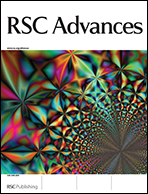A molecular simulation study is reported to investigate the adsorption of CO2 and H2 in a recently synthesized paddle-wheel Cu-based metal–organic framework (Cu–MOF). The Cu–MOF consists of three types of cages; the type-III cages are restricted by narrow windows and inaccessible to gas molecules. By blocking the inaccessible type-III cages, the simulated adsorption isotherms for pure CO2 and H2 agree well with experimental data. Ideal-adsorbed solution theory (IAST) is used to predict the adsorption of a CO2/H2 mixture, and the predicted isotherms and selectivities are consistent with simulated results. Furthermore, the breakthrough profiles are evaluated for a CO2/H2 mixture in a fixed-bed packed with the Cu–MOF. The breakthrough times are estimated to be 2.8 and 85.2 for H2 and CO2, respectively, implying the efficient separation of the CO2/H2 mixture. The simulation study reveals the crucial role of blocking inaccessible cages in the proper simulation of gas adsorption in the Cu–MOF, and the capability of IAST applied to the Cu–MOF with inaccessible cages.

You have access to this article
 Please wait while we load your content...
Something went wrong. Try again?
Please wait while we load your content...
Something went wrong. Try again?


 Please wait while we load your content...
Please wait while we load your content...